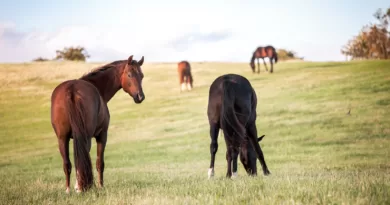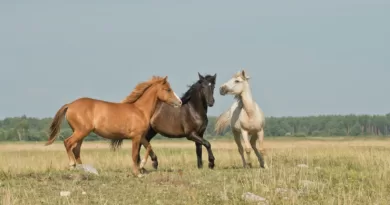How to Break In Horses
Understanding Horse Behavior and Communication
Horses are fascinating creatures with intricate behavioral patterns that can be deeply understood through careful observation. By studying their body language, we can decipher their moods and intentions. For instance, a relaxed horse will have loose muscles, soft eyes, and may even give a sigh of contentment. On the other hand, an anxious or fearful horse will display signs such as pinned ears, a tense posture, and a raised head. By learning to interpret these subtle cues, we can establish a stronger connection with our equine companions.
Communication between horses is predominantly nonverbal, relying on a complex system of visual and auditory signals. Understanding these signals can significantly enhance our ability to communicate effectively with horses. For example, horses communicate their hierarchy through body language, with dominant individuals showing assertive behaviors like charging or biting, while submissive horses display more passive behaviors like turning away or lowering their head. By developing a keen understanding of horse behavior and communication, we can build trust and establish ourselves as effective leaders in our horse’s eyes.
Building Trust and Bonding with Your Horse
Building trust and bonding with your horse is a crucial step in developing a strong and harmonious relationship. Horses are highly perceptive animals and they respond well to gentle and consistent handling. One of the best ways to build trust is by spending quality time with your horse, engaging in activities that they enjoy. This could include grooming sessions, hand-grazing, or simply just being in their presence. By being calm and patient, you can create a safe and comfortable environment for your horse, allowing them to feel secure and confident in your presence.
In addition to spending time together, effective communication is also key in building trust. Horses communicate through body language, so it is important to be aware of your own signals and learn to interpret your horse’s responses. By becoming attuned to their subtle cues and expressions, you can better understand their needs and desires. This mutual understanding and clear communication will not only help to foster trust, but also strengthen the bond between you and your horse.
Preparing the Horse for Breaking In
Preparing the horse for breaking in is a crucial step in the training process. This stage involves familiarizing the horse with the basic tools and equipment that will be used during the breaking-in process. It is essential to introduce the horse to these items in a gentle and non-threatening manner, ensuring that they associate them with positive experiences. This will help to build trust and reduce any fear or anxiety they may have towards new objects.
Additionally, preparing the horse for breaking in involves developing groundwork skills. Groundwork exercises serve as the foundation for establishing respect, obedience, and communication between the horse and the handler. These exercises typically include leading, lunging, and desensitizing the horse to different stimuli. By focusing on these fundamental skills, the horse will become more responsive and attentive to the handler’s cues, making the breaking-in process smoother and less stressful for both horse and rider.
Developing Groundwork Skills for a Successful Break In
Establishing a strong foundation through groundwork is crucial for a successful break-in process with your horse. Groundwork refers to various exercises and activities performed on the ground, which help develop trust, respect, and communication between you and your equine companion. These skills form the basis for a solid partnership and will greatly contribute to a smoother transition when it comes time to introduce riding.
One essential aspect of groundwork is teaching your horse to respond to basic commands, such as walking, trotting, and stopping, through the use of clear and consistent cues. This can be achieved through the use of a lunge line or by working in a round pen. By focusing on building a strong connection with your horse and ensuring they understand these commands, you will set them up for success when it comes time to progress to under-saddle training. Additionally, incorporating obstacle work, such as navigating poles or cones, can help your horse develop balance, coordination, and responsiveness to your cues. A confident and willing horse on the ground will be more likely to carry these qualities when ridden, leading to a positive and effective break-in process.
Introducing Tack and Equipment in a Gentle Manner
Introducing tack and equipment to a horse is a crucial part of their training process. It is essential to approach this step with a gentle and patient attitude, ensuring that the horse feels comfortable and safe. When starting out, it is advisable to use a soft and lightweight saddle pad to introduce the concept of being ridden. Gradually, the horse can be introduced to a properly fitted saddle and bridle.
One important aspect to consider is the horse’s response to the equipment. Some horses may exhibit fear or anxiety when seeing unfamiliar objects near them. In such cases, it is vital to desensitize the horse by allowing them to explore the tack and equipment at their own pace. Using positive reinforcement techniques, such as rewarding the horse with treats or praise, can help create a positive association with the equipment. This approach ensures that the horse associates the tack and equipment with pleasant experiences, paving the way for a smooth and successful training journey.
Starting with Basic Obedience Training
Once your horse has mastered the basics of groundwork, it’s time to move on to basic obedience training. This phase of training focuses on teaching your horse to respond to simple commands and cues. The goal is to establish a clear line of communication between you and your horse, laying the foundation for more advanced riding skills.
During basic obedience training, you will introduce your horse to verbal cues and body language signals. You’ll start with the most fundamental commands, such as “walk,” “halt,” and “turn.” It’s important to be consistent with your cues and use positive reinforcement, such as praise or treats, to reward your horse for correct responses. As your horse learns each command, gradually increase the difficulty of the tasks to challenge their understanding and build their confidence. Remember to be patient and understanding as your horse learns these new skills, as every horse learns at their own pace.
Gradually Introducing the Rider and Building Confidence
Introducing the rider to a horse can be an exciting but delicate process. Gradual introduction is key to building trust and confidence between the two.
Initially, it is essential for the rider to spend time getting acquainted with the horse on the ground. This can involve activities such as grooming, leading, and practicing basic groundwork exercises. By engaging in these exercises, the rider can establish a positive relationship with the horse, allowing both to become familiar with each other’s presence and communication styles. As trust begins to develop, the rider can then move on to more advanced exercises, such as desensitizing the horse to different objects and sounds, gradually building confidence in both the rider and the horse.
As the horse starts to show comfort and trust in the rider’s presence, it is time to introduce the concept of mounting and dismounting. This step should be approached with patience and caution, ensuring that the horse is prepared and receptive. Initially, the rider can practice mounting from a mounting block and dismounting on the opposite side. This technique allows the horse to become accustomed to the rhythmic movements and weight shifts associated with riding. Gradually, the rider can progress to mounting from both sides and eventually from the ground itself. This gradual approach allows the horse to become comfortable with the rider’s movements and presence, helping to build trust and confidence in both the rider and horse partnership.
The process of gradually introducing the rider and building confidence is crucial in creating a strong foundation for a successful partnership. Taking the time to establish trust and communication on the ground before progressing to mounted activities can help prevent fear and resistance later. By following these steps, riders can take their time to ensure that both they and their horse are prepared for the next stage of their journey together.
Dealing with Resistance and Overcoming Challenges
Resistance and challenges are inevitable when it comes to breaking in a horse. It is important to approach these obstacles with patience and understanding, as forcing the horse will only lead to further resistance. Instead, take the time to evaluate the root cause of the resistance and address it accordingly.
One common form of resistance is fear. Horses are naturally prey animals, and their survival instinct can kick in when faced with unfamiliar or frightening situations. To overcome this, it is essential to gradually expose the horse to new environments, objects, and experiences. Start with small steps, allowing the horse time to process and desensitize to each new situation. Reward and praise the horse for any signs of progress, creating a positive association with the previously feared stimuli. With consistent and patient training, the horse will learn to trust and overcome its initial resistance, resulting in a more confident and willing partner.
Progressing to Riding in Different Environments
Riding a horse in different environments is a crucial step in their training and development. It allows them to become comfortable and confident in new and unfamiliar surroundings, preparing them for a wide range of experiences. Whether it’s riding on the beach, through fields, or even in busy urban areas, exposing your horse to various environments helps them to adapt and remain calm in any situation.
However, it is essential to introduce your horse to new environments gradually and with patience. Start by riding in a familiar area, then gradually expose them to different surroundings, adding variety to their training routine. This could include riding on different types of terrain, such as gravel roads, forest trails, or open fields. By gradually increasing the level of challenge, your horse will develop the necessary skills and confidence to handle different environments with ease. Remember, every horse progresses at its own pace, so be sure to pay attention to their reactions and adjust your training accordingly.
Continuing Education and Ongoing Training for a Well-Broken Horse
Continuing education and ongoing training are essential for maintaining a well-broken horse. Once a horse has been successfully broken in, it is important to continue to nurture and develop their skills. This ensures that they remain responsive, obedient, and safe to ride.
One aspect of continuing education is consistently practicing and reinforcing the horse’s groundwork skills. By regularly engaging in groundwork exercises, such as lunging and leading, the horse’s focus and obedience can be reinforced. This not only helps to maintain their trust and respect for their handler, but also serves as a reminder of their training and reinforces their understanding of commands and cues.
In addition to groundwork, ongoing training should also involve introducing the horse to new experiences and environments. Gradually exposing the horse to different surroundings, such as trails, arenas, and obstacles, helps to build their confidence and adaptability. By gradually increasing the level of challenge, the horse can continue to develop their skills and become more well-rounded in their training.
Overall, continuing education and ongoing training for a well-broken horse is a crucial part of their development. By consistently practicing and reinforcing their skills, introducing them to new experiences, and gradually increasing the level of challenge, horses can continue to grow and flourish in their training, resulting in a safe and enjoyable riding experience for both horse and rider.
What is the importance of understanding horse behavior and communication?
Understanding horse behavior and communication is crucial for effective training and building a strong bond with your horse. It allows you to interpret their actions, needs, and emotions, leading to better communication and a more successful training experience.
How can I build trust and bonding with my horse?
Building trust and bonding with your horse requires time, patience, and consistent positive reinforcement. Spend quality time together, engage in activities that your horse enjoys, and always maintain a calm and patient approach.
How should I prepare my horse for breaking in?
Before breaking in your horse, ensure they have a solid foundation in groundwork skills, are comfortable being handled, and have experienced various stimuli in a controlled environment. Gradual exposure to new experiences will help prepare them for the breaking-in process.
What are groundwork skills, and why are they important?
Groundwork skills involve teaching your horse basic commands from the ground, such as leading, stopping, turning, and backing up. These skills are essential for establishing respect, trust, and obedience, providing a solid foundation for further training.
How can I introduce tack and equipment to my horse in a gentle manner?
Introduce tack and equipment gradually by allowing your horse to sniff and investigate them before gently placing them on their body. Use positive reinforcement, praise, and rewarding experiences to associate the tack and equipment with positive feelings.
What should be the starting point for basic obedience training?
Basic obedience training should begin with teaching your horse fundamental commands such as halt, walk, trot, and canter. Start in a controlled environment and gradually increase the difficulty level as your horse becomes more proficient.
How can I gradually introduce the rider and build confidence in my horse?
Gradually introduce the rider by starting with a rider in the saddle while being led by a handler. Slowly increase the horse’s comfort level by reducing the amount of assistance provided until the horse can confidently carry the rider independently.
How can I deal with resistance and overcome challenges during training?
Resistance can be addressed by identifying the root cause, such as fear or misunderstanding, and addressing it through patient and consistent training methods. Seek professional guidance if necessary to overcome challenges and ensure the safety of both horse and rider.
How can I progress to riding in different environments?
Start by riding in a familiar and controlled environment, gradually introducing new environments with different stimuli. Expose your horse to various sights, sounds, and surfaces while maintaining a calm and confident demeanor to build their confidence in different environments.
Why is continuing education and ongoing training important for a well-broken horse?
Continuing education and ongoing training help maintain and improve the skills and abilities of a well-broken horse. Regular training sessions, exposure to new experiences, and refinement of commands contribute to the horse’s overall growth, performance, and relationship with the rider.




